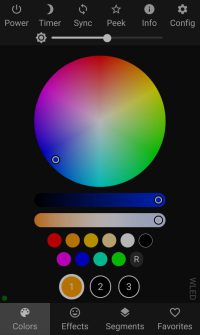In May, I built my own 36×16 LED panel. The project was a lot of fun to build and taught me a lot, but honestly, I haven’t used it much since then. The original plan had been to build two of them and use them as Christmas decorations, but I can probably count on one hand the number of times I’ve turned it on. The software side of things was a mess which is a bit ironic given my profession. I had improved on the tutorial by writing my own app that ran on the desktop and communicated directly with the ESP8266 board. The board had very simple firmware which just received a stream of bytes and displayed it. That worked ok and I got a pretty good refresh rate, but the main issue was that after a few minutes, the board would stop updating and I couldn’t figure out why. After a long day of coding for my day job, I could never convince myself to spend time debugging this.
Fast forward to late November when I was watching a video from “The Hook Up” on YouTube about his Christmas light setup. It was at that moment that I realized that most of these Christmas light displays and lots of maker projects run on an LED control package called WLED. It’s free and open source and it’s very customizable. Could it work with my custom matrix?
About an hour later, I had it working, and most of that was me just fumbling around learning things. There was already a version of WLED that was compatible with my ESP8266 board so I loaded it on and instantly had a webserver that I could access from my desktop or phone. The built-in software is fantastic but there is also a big ecosystem of projects built on top of WLED if you want, for example, to display an animated gif on the matrix.
In the last week I’ve had it on more than I did in the previous six months. While it’s too late to build another one to use for the front window for Christmas, it has me thinking about next year.

